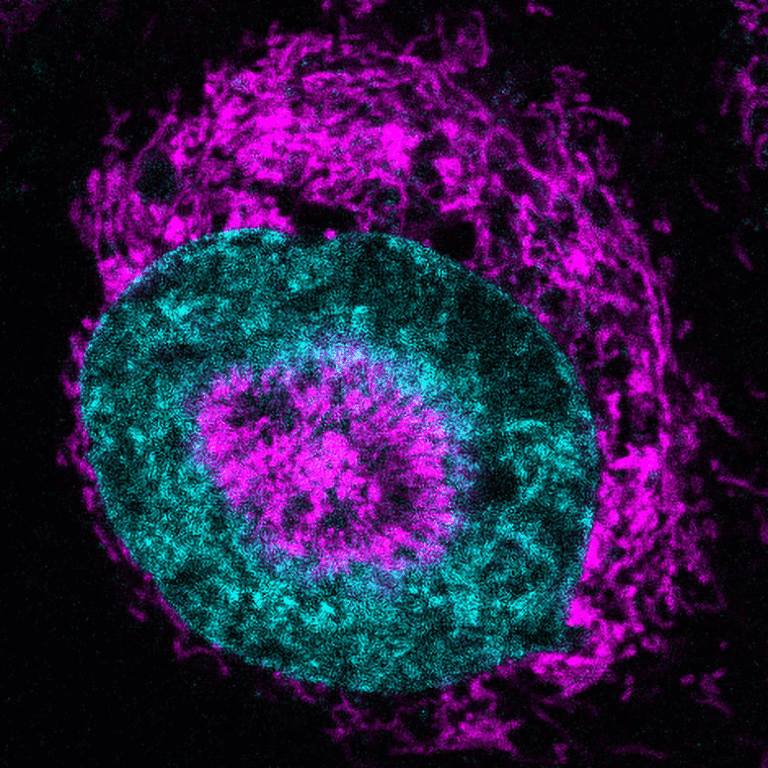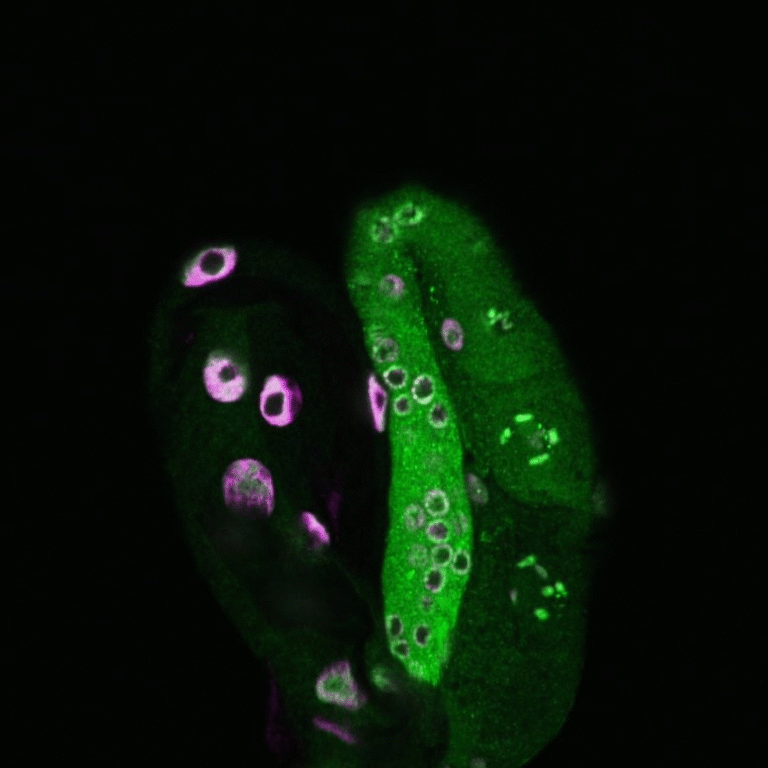Rethinking Alzheimer’s: New Study Uncovers How Memory Loss May Really Happen

For decades, scientists studying Alzheimer’s disease have been trying to untangle one of the biggest mysteries in neuroscience — why do brain cells lose their ability to communicate and eventually die?
The traditional answer has revolved around amyloid beta, a sticky protein that clumps together in the brain. But a new study suggests that the truth may be far more complex — and that neurons themselves might be playing a more active role in their own downfall.
In a paper published in September 2025 in the Proceedings of the National Academy of Sciences (PNAS), researchers from Stanford University, led by Carla Shatz and Barbara Brott, have discovered a surprising connection between two long-standing theories of Alzheimer’s: the amyloid hypothesis and the inflammation hypothesis. Their findings show that both processes may target the same receptor in the brain, a molecule known as LilrB2, which acts as a sort of molecular switch for synapse pruning — the removal of connections between neurons.
This new discovery could force scientists to rethink how Alzheimer’s damages the brain and may open the door to new kinds of treatments that focus on protecting synapses, the vital links that allow brain cells to communicate and store memories.
A New Link Between Amyloid and Inflammation
One of the enduring questions in Alzheimer’s research has been how different factors — such as protein buildup, inflammation, and immune response — come together to cause memory loss. Most current drugs target amyloid beta, the protein fragment that forms plaques between neurons. However, many of these treatments have shown limited success and often come with unwanted side effects like brain swelling and microbleeds.
Meanwhile, another line of research has focused on neuroinflammation — the idea that the brain’s immune system, particularly the complement cascade, becomes overactive and mistakenly destroys healthy synapses. The complement system is normally part of the body’s defense mechanism, tagging harmful microbes and damaged cells for removal. But in Alzheimer’s, this system appears to go haywire.
Until now, these two ideas — amyloid buildup and inflammation — were treated as separate problems. Shatz’s team has now shown they are likely two sides of the same coin, converging on the same receptor: LilrB2 (and its mouse equivalent, PirB).
The LilrB2 Receptor: A Neuronal Switch
The story of LilrB2 began nearly twenty years ago. In 2006, Carla Shatz and her colleagues discovered that the mouse version of this receptor, PirB, helps regulate synaptic pruning, the natural process of trimming excess connections during brain development. This pruning keeps neural circuits efficient and flexible.
A few years later, in 2013, her team made a remarkable discovery: amyloid beta binds directly to LilrB2, triggering excessive pruning even in the adult brain. When they genetically removed the receptor from mice that model Alzheimer’s, those animals didn’t suffer the usual memory loss, suggesting that LilrB2 plays a central role in the disease’s damaging effects.
But that left another mystery unsolved. Inflammation — and particularly the complement system — is also known to play a part in Alzheimer’s. Could inflammation and amyloid beta somehow be using the same molecular machinery to damage the brain?
C4d: The Missing Piece of the Puzzle
To test that possibility, Shatz’s team screened various complement molecules to see if any could interact with the LilrB2 receptor. Surprisingly, they found only one that bound strongly: C4d, a small fragment that forms when the complement protein C4 is activated.
C4d had previously been thought to be biologically inactive — basically a byproduct of immune activity. But when the researchers injected C4d directly into the brains of mice, something startling happened: the animals rapidly lost synapses. In other words, C4d could strip away the connections between neurons, mimicking the same kind of synaptic damage seen in Alzheimer’s.
Even more telling, this effect disappeared in mice that lacked the PirB receptor. That means C4d’s harmful action depends entirely on binding to LilrB2/PirB, confirming that both amyloid beta and inflammation can trigger synapse loss through the same receptor.
In tissue samples from human Alzheimer’s patients, the researchers also observed higher levels of C4d and found that it colocalizes with LilrB2 and amyloid beta at the very places where neurons connect. This points to a shared pathway that links the two major processes thought to drive Alzheimer’s: protein buildup and inflammation.
Why Synapse Loss Matters
One of the most important aspects of this study is that it shifts the focus of Alzheimer’s research from neuronal death to synapse loss. Long before neurons die, their connections start to weaken or disappear, which corresponds closely with early memory problems and cognitive decline.
By identifying LilrB2 as a key player in this process, the study suggests that neurons aren’t just innocent victims being attacked by plaques and immune cells — they are actively participating in their own synaptic dismantling. This reframes Alzheimer’s as a condition where communication between neurons breaks down at a molecular level long before the cells themselves die.
If this view holds true, then preventing or reversing synaptic pruning could become one of the most effective ways to preserve memory and cognition.
The Therapeutic Implications
Today’s Alzheimer’s treatments mostly focus on breaking up or removing amyloid plaques. Drugs such as Leqembi (lecanemab) and Aduhelm (aducanumab) work by helping the immune system clear amyloid from the brain. But their benefits are modest, and they can cause significant side effects.
The new study suggests a different approach: rather than targeting amyloid itself, target the receptor that mediates the damage — LilrB2. Blocking this receptor could potentially stop synapse loss regardless of whether the trigger is amyloid beta or inflammation.
Such an approach could be more comprehensive, tackling both major drivers of Alzheimer’s at once. It could also help scientists develop neuroprotective therapies that focus on maintaining communication between neurons rather than trying to clean up the aftermath of plaque buildup.
Understanding the Complement System
To appreciate the significance of the C4d finding, it’s worth understanding how the complement system works. It’s part of the innate immune system, meaning it acts as an early defense mechanism against infections. Complement proteins circulate in the blood and brain, tagging harmful invaders or damaged cells so that immune cells can remove them.
The complement cascade operates like a chain reaction. Once triggered, it activates multiple proteins — C1, C2, C3, C4, and so on — each cleaving the next in line. One of the cleavage products of C4 is C4d, which typically acts as a marker that the complement system has been activated.
In Alzheimer’s disease, the complement system is overactivated, possibly because the brain perceives amyloid plaques as a form of “damage.” This overactivation can end up targeting healthy synapses for removal. The discovery that C4d binds directly to LilrB2 now gives scientists a molecular explanation for how this could happen.
The Bigger Picture: Converging Theories
The beauty of this research is that it unites two major schools of thought in Alzheimer’s research. For years, scientists debated whether amyloid beta or inflammation was the real culprit. This study suggests that both are right — and that they converge on the same molecular switch.
By identifying LilrB2 as that shared receptor, the Stanford team has provided a bridge between the amyloid cascade hypothesis and the neuroinflammation hypothesis. This convergence also explains why treatments aimed only at amyloid clearance have been disappointing: they target only one branch of the problem, not the receptor where both pathways meet.
Limitations and Open Questions
Like all new discoveries, this one raises as many questions as it answers. Most of the experiments were done in mice, so scientists still need to confirm how this mechanism operates in humans. Brain tissue studies are encouraging, but living systems are far more complex.
There’s also the issue of safety. The LilrB2 receptor isn’t unique to Alzheimer’s — it’s involved in many other processes, including immune regulation and normal brain plasticity. Blocking it completely could interfere with healthy functions.
Moreover, synapse loss is only one part of Alzheimer’s. Other factors — such as tau tangles, mitochondrial dysfunction, and vascular damage — also play major roles. Alzheimer’s is a multifaceted disease, and targeting a single pathway, no matter how central, may not be enough on its own.
Still, by showing that C4d and amyloid beta act through a shared receptor, this study has taken a major step toward a more unified understanding of the disease.
What This Means for Future Research
This finding could reshape how scientists design new Alzheimer’s drugs. Instead of focusing exclusively on removing amyloid, researchers might begin developing molecules that block LilrB2 binding or interrupt the complement cascade before it reaches the brain’s neurons.
It also highlights the importance of looking beyond the usual suspects. Many neurodegenerative diseases — including Parkinson’s, Huntington’s, and ALS — involve inflammation and synapse loss. Understanding how receptors like LilrB2 function could shed light on broader brain resilience mechanisms.
The study also ties into a growing research movement on “brain resilience” — the biological factors that help some people maintain cognitive function even when their brains show signs of Alzheimer’s pathology. Projects like the Knight Initiative for Brain Resilience at Stanford, which helped fund this research, are exploring how neurons resist or adapt to stress and damage over time.
Final Thoughts
This new research doesn’t overturn what we know about Alzheimer’s, but it adds a crucial missing piece: a molecular bridge connecting amyloid beta, inflammation, and synapse loss. By revealing how both amyloid and immune signals act through the same neuronal receptor, it points to a simpler, more unified explanation of how the disease disrupts memory.
If future studies confirm these results, the focus of Alzheimer’s treatment could shift from clearing plaques to protecting synapses — the true currency of memory and thought.
Research Reference:
Brott, B.K., Raissi, A.J., Micheva, K.D., Vielmetter, J., Mendes, M.S., Baccus, C.J., Huang, J., & Shatz, C.J. (2025). C4d, a high-affinity LilrB2 ligand, is elevated in Alzheimer’s disease and mediates synapse pruning. Proceedings of the National Academy of Sciences (PNAS).
https://doi.org/10.1073/pnas.2519253122





